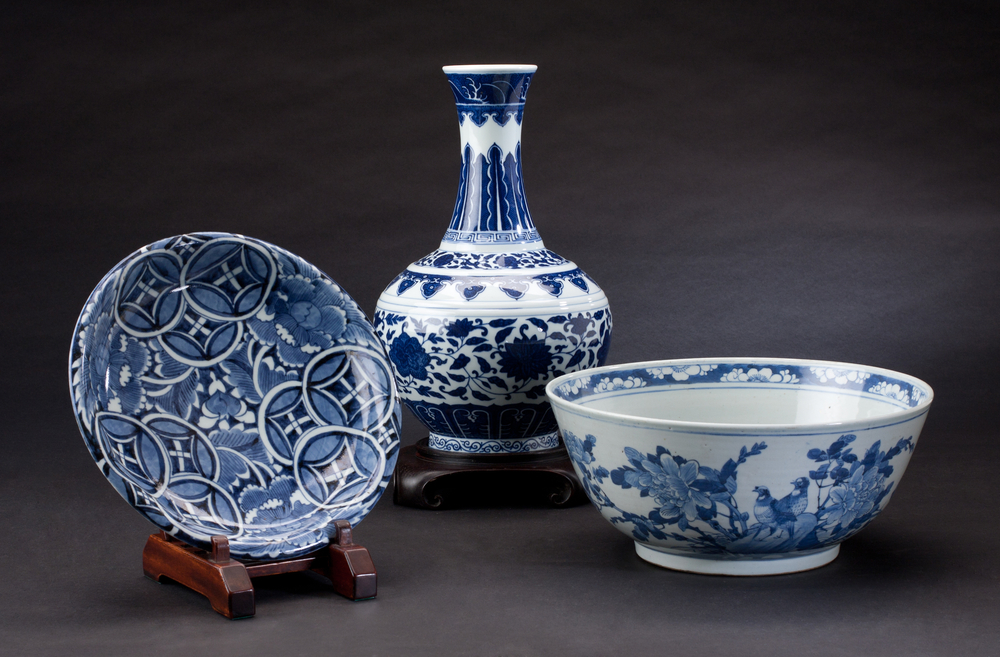In the swirling kaleidoscope of generational differences, one thing that often stands out is the peculiar attachment Boomers have to certain objects and customs. While younger generations hastily embrace the new and shiny, Boomers seem to take comfort—and perhaps even joy—in holding onto relics that, to the untrained eye, might seem inexplicably odd. Call it nostalgia, resistance to change, or just a Boomer thing; these items and habits are as enigmatic as they are enduring.
1. Rotary Phones

Though their simplicity may be charming, rotary phones are an artifact that Boomers seem to adore. The deliberate motion of dialing a number, the satisfying click of the dial returning—there’s a tactile nostalgia that no touchscreen will ever replace. According to a study published in the Journal of Consumer Research, this kind of nostalgia is comforting because it offers a tactile connection to a simpler time, offering solace in an era of fast-paced change. For Boomers, these phones are less about utility and more about a physical tie to their formative years.
It’s not just the mechanics that they appreciate; it’s the entire ritual surrounding phone calls in the pre-digital age. Waiting by the phone, the absence of caller ID, and even the busy signal imbue a sense of patience and mystery that modern communication lacks. There’s an intimacy in the act of dialing that technology has stripped away. So while Millennials and Gen Z opt for convenience, Boomers delight in the cumbersome dance of the rotary dial.
2. Fine China Collections

For Boomers, fine china is more than just tableware; it’s a rite of passage. Passed down through generations, these pieces are often displayed with reverence, a sign of familial continuity and domestic prestige. The idea that one would only use these dishes on special occasions adds an element of sacredness—an opportunity to break from the mundane and celebrate the extraordinary. Yet, to younger generations, such formality might seem antiquated when casual dining has become the norm.
The appeal lies in the stories woven into each piece—the wedding gifts, the sought-after sets acquired through quest-like persistence. The designs themselves often tell stories of artistic evolution, capturing an era’s aesthetic essence. While practical aspirations might dictate the use of simpler, more durable dishes, Boomers relish the fine china as a decorative chronicle of family history. For them, the fragility of China echoes the delicate nature of cherished memories.
3. Encyclopedias

In a world where Google is but a click away, the vast, leather-bound encyclopedias set lining Boomer bookshelves can seem redundant. There was a time, however, when these volumes represented the pinnacle of human knowledge, meticulously compiled and authoritative. Professor Anne Geffner from New York University suggests that keeping these sets is a form of intellectual pride, representing a time when information was a resource to be cherished, not taken for granted. For Boomers, encyclopedias are tangible tokens of a pre-digital era, embodying the weight of their accumulated wisdom.
The allure of encyclopedias extends beyond mere nostalgia; they offer a tactile, immersive reading experience that screens simply cannot replicate. Opening a book at random can lead to serendipitous discoveries, a feature that algorithms, in their precision, lack. The physical heft of a volume demands attention, focus, and a certain reverence that the ephemeral nature of the internet does not. Thus, encyclopedias remain on shelves, silent sentinels of a more deliberate age of learning.
4. Antenna TVs

While sleek, flat-screen TVs now dominate the living room, some Boomers still cling to their bulky, antenna-equipped predecessors. The ritual of adjusting rabbit ears to catch a signal—a frustrating yet oddly satisfying process—evokes a certain nostalgia for the deliberate effort once required to access entertainment. It’s a tactile reminder of a time when TV watching was a shared family experience, grounded in the present moment rather than dispersed across individual devices.
The grainy images and unpredictable signal could be seen as a metaphor for life’s unpredictability, a notion that resonates deeply with Boomers. There is a certain poetic justice in watching a broadcast that can, at any moment, devolve into static. This unpredictability is a far cry from the on-demand world, where instant gratification is king. For Boomers, antenna TVs serve as a comforting relic of a slower-paced past.
5. Paper Maps

In the age of GPS and digital maps, holding onto paper maps might seem redundant, yet for many Boomers, these unfoldable beasts epitomize adventure. There’s a certain romance in tracing your finger along a route, feeling the paper under your skin, and imagining the journey ahead. A survey conducted by the American Automobile Association found that many Boomers believe paper maps offer a broader perspective on the journey, not just the destination. They provide a sense of scale and context that a screen simply cannot match.
Paper maps also symbolize a mastery over one’s environment, a skill honed through years of road trips and exploration. Unlike the constant recalibrating of digital maps, they offer a fixed, unyielding guide to the world, echoing a time when self-reliance was paramount. They’re a talisman against the loss of navigational skills in an era dominated by turn-by-turn directions. More than just a navigational tool, they are a reminder of the thrill of discovery.
6. Home Repair Manuals

In an era where “there’s a YouTube tutorial for that,” Boomers’ reliance on hefty home repair manuals can be puzzling. These tomes, often dog-eared and stained from years of use, offer detailed instructions with an air of authority that digital guides sometimes lack. For Boomers, these manuals are a testament to self-sufficiency and the satisfaction of a job well done. They resonate with the ethos of a generation taught to fix things rather than replace them.
The physicality of a book lends the process a certain gravitas; flipping through pages and scribbling notes feels like part of the learning process. Manuals offer a curated, expert-driven approach to solving problems, in contrast to the sometimes overwhelming, contradictory advice found online. The tactile ritual of consulting a manual fosters a deeper connection to the task at hand. For Boomers, the permanence of a book instills confidence that digital media, with its impermanence, cannot.
7. Record Players

With streaming services offering millions of songs at our fingertips, the affection Boomers have for record players can seem bewildering. Yet for many, the analog warmth of vinyl provides an auditory experience that digital simply can’t replicate. According to musicologist Dr. Brian Lennon, the resurgence in vinyl is due to its superior sound quality and the nostalgic ritual it entails. Boomers revel in the deliberate act of selecting a record, setting the needle, and immersing themselves in the richness of analog sound.
The tactile sensation of flipping through records, examining album art, and hearing the faint crackles of a needle in a groove creates a multisensory experience. It’s a ritual that demands presence and intention, a stark contrast to today’s passive listening habits. For Boomers, record players are more than just music players; they are portals to a time when music was a shared experience, not just a solitary escape. They embody the ethos of savoring music, not simply consuming it.
8. Typewriters

In an age dominated by laptops and tablets, typewriters seem anachronistic, yet Boomers often hold them in high esteem. They are more than just writing tools; they are artifacts of creativity, instruments that engage the senses in a way no keyboard can. The satisfying clack of the keys, the physical effort required to type, and the permanence of ink on paper all contribute to a writing ritual that demands focus and intention.
For Boomers, typewriters symbolize a discipline and artistry that modern technology can’t match. The tactile experience of writing on a typewriter is a reminder of a time when each word was chosen carefully to avoid the laborious process of correction. It’s a celebration of the analog, a pushback against the ephemeral nature of digital communication. In a world of auto-correct and spell check, typewriters stand as a testament to the beauty of imperfection.
9. Address Books

In today’s digital world, address books have been replaced by contact apps, yet Boomers often cherish their well-worn paper versions. These books are a testament to relationships, filled with handwritten numbers and notes that digital screens cannot replicate. Each entry tells a story, a testament to the time spent cultivating relationships in a pre-digital age.
For Boomers, address books are not just functional; they are personal artifacts, a reflection of their social histories. The tactile nature of flipping through pages, seeing the evolution of entries over time, and the act of updating information are grounding rituals. They offer a sense of continuity and connection that a digital contact list cannot provide. In holding onto address books, Boomers preserve the personal touch in an increasingly impersonal world.
10. Postcards

In an era of instant communication, the practice of sending and receiving postcards feels quaint. Yet for Boomers, postcards hold a charm that emails and texts simply can’t match. They encapsulate the art of succinct storytelling, capturing the essence of a place with a picture and a few well-chosen words. Each postcard is a tangible memory, a snapshot of a moment in time.
The act of writing and receiving postcards is a ritual that celebrates thoughtfulness and connection. Unlike the immediacy of digital communication, postcards require patience and anticipation, making their arrival all the more special. For Boomers, these cards are not just mementos; they are symbols of a time when distance meant something, and communication was an art. In an age of instant gratification, postcards are a testament to the beauty of delay.
11. Recipe Boxes

In a time when countless recipes are just a search away, the presence of recipe boxes in Boomer kitchens might seem unnecessary. Yet these collections are more than just culinary guides; they are familial heirlooms, passed down through generations. Each card is a link to the past, laden with memories of family gatherings and cherished meals. They offer a tactile connection to loved ones, a physical manifestation of tradition.
The ritual of handwriting recipes, the smudges of ingredients past, and the personalization of each card imbue them with a sense of authenticity. Unlike the fleeting nature of digital recipes, these cards offer a curated collection of tried-and-true favorites. For Boomers, recipe boxes are not just about cooking; they are about preserving a culinary legacy. In a world of endless online options, they represent the comfort of the familiar.
12. Travel Souvenirs

In an age where experiences are often captured through photos and social media posts, Boomers’ attachment to physical travel souvenirs might seem curious. Yet these mementos are more than just decorative objects; they are tangible memories of adventures past. Each item tells a story, a reminder of the places visited and the people met along the way. They offer a sense of history and connection that digital images cannot capture.
For Boomers, travel souvenirs are a celebration of exploration and discovery. The act of selecting a souvenir, displaying it at home, and recalling the journey is a ritual that enriches their lives. Unlike digital media, these items offer a sensory experience, a connection to the culture and craftsmanship of a place. They are reminders that travel is about more than just the destination; it is about the journey and the memories made along the way.
13. Film Cameras

In the age of digital photography, the continued use of film cameras by some Boomers can seem perplexing. Yet for them, these cameras offer a level of artistry and intention that digital simply can’t match. The process of loading film, composing a shot, and waiting for development imbues each photo with a sense of purpose. It’s a practice that celebrates the art of photography, not just the result.
Film cameras require patience and skill, offering a deliberate approach to capturing moments. Each shot is a decision, a commitment to a particular frame. For Boomers, this process is a celebration of the analog, a reminder of the beauty in imperfection. In a world where images are often disposable, film photography stands as a testament to the enduring power of the physical photograph.
Natasha is a seasoned lifestyle journalist and editor based in New York City. Originally from Sydney, during a stellar two-decade career, she has reported on the latest lifestyle news and trends for major media brands including Elle and Grazia.


